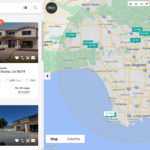NAR’s 2024 Migration Trends report reveals consumers’ motivations for relocating and which states are gaining the most new residents.
A job change, which is typically a primary impetus for moving, is becoming less of a motivating factor for people to relocate—even as some companies call for employees to return to the office.
Recent home buyers say they were more motivated to move to be closer to friends and family or to find greater affordability, according to the National Association of REALTORS®’ newly released 2024 Migration Trends report.
“Being closer to family and friends has been growing in importance among home buyers since the onset of the pandemic,” says Matt Christopherson, the lead author of the report and NAR’s director of business and consumer research. “Perhaps the pandemic put things into perspective and buyers are prioritizing family more, but added mobility from remote work also allows this to occur.”
The South is drawing a large portion of relocating buyers, with the Carolinas, Florida and Texas being the “big winners,” NAR’s report says.
“Given the lack of affordability in today’s market, it’s no shock Americans are flocking to Southern states for more affordable housing options and getting more home for their money,” Christopherson says. Further, “Texas and Florida have both seen more than 10% increases in job gains since the arrival of the COVID pandemic. With more affordable housing, lower taxes and strong job markets, Florida and Texas are highly desirable to America’s home buyers.”
People moving to the South and West are most likely coming from a different state while relocations in the Northeast are most likely to be people moving within the same state, NAR’s study finds.
Top 20 States Gaining More Residents
Southern and Midwestern states tend to offer greater housing affordability, which may explain their appeal to buyers. Case in point: NAR’s latest existing-home sales report shows that the median price is $361,200 in the South and $305,300 in the Midwest. Both are significantly lower than the $627,700 median price in the West and $472,900 in the Northeast.
These are the 20 states with the largest net migration, according to NAR’s analysis:
- Florida: 372,870 new residents
- Texas: 315,301
- North Carolina: 126,712
- South Carolina: 91,853
- Georgia: 88,325
- Tennessee: 76,471
- Arizona: 57,814
- Alabama: 36,128
- Oklahoma: 31,967
- Ohio: 28,718
- Indiana: 22,468
- Arkansas: 22,202
- Virginia: 21,132
- Idaho: 20,053
- Wisconsin: 19,301
- Colorado: 19,167
- Missouri: 19,023
- Kentucky: 16,592
- Washington: 13,643
- Nevada: 12,908
Moving Motivations
Forty-three percent of real estate pros say job relocation did not play a role in their client’s purchase decision, and only 2% say their clients moved because of their employer’s office policies, according to NAR’s report.
Instead, agents reported a greater desire among their clients to seek more affordability and live closer to family and friends. Some home buyers also were motivated to relocate for lower or more favorable taxes, particularly those who moved to the South.
“Home buyers are placing a priority on getting more bang for their buck, looking to areas with not only more space within their home but also favorable taxes,” says NAR Deputy Chief Economist Jessica Lautz. “This migration flow will likely continue as retirees and remote workers relocate.”
Here are the top motivating factors identified for relocations, broken down by geographic area.
Real estate professionals also say their relocating clients were seeking specific homes that offered appealing outdoor space, additional square footage and a “quiet” location. Here’s a breakdown of top home preferences based on geographic region.
Notably, many relocators do not sell their previous home, NAR’s report shows. Twenty percent of relocating buyers say they kept their previous residence as an investment, rental or vacation property; this is most likely to occur with buyers moving to the West and Northeast.
Learn more about buyer and sellers trends in NAR’s 2024 Profile of Home Buyers and Sellers.
Source: nar.realtor













